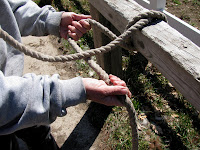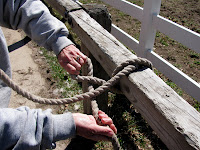
Some thought about alpaca manure. After a few years of dealing with alpacas, I have scooped a lot of poop. So I thought we would share some insights.
•Alpacas are helpful. As soon as you start cleaning up their piles, they'll line up to leave more so that you can pick it up while you are still there.
•Alpaca poop IS a gourmet treat to your dog. It will be a race to see who can get it cleaned up first, you or your dog. (Maybe I have a strange weird dog.)
•If you use a shovel and a wheelbarrow to scoop poop, do not push a fully loaded wheelbarrow on the side of a hill. It will tip over spilling all the contents someplace you do not want it to be. It will be a great conversation piece for your wife and kids.
•Your teenage girls WILL NOT pick-up alpaca manure no matter how much money you offer them. It ain't gonna happen, so just get yourself out there and start scooping.
•Beware of small children in your pasture. They will attempt to pick-up the poop, squeeze it in there hand. Do not even ask where it goes after that!
•Alpacas leave their poop in nice piles. Beware of a football game in the pasture, and never play tackle football there!
Probally more than you wanted to know about manure. We did plant a garden last year and used lots of alpaca manure. Everything grew great. We believe the alpaca poop was the key. Give it a try.









